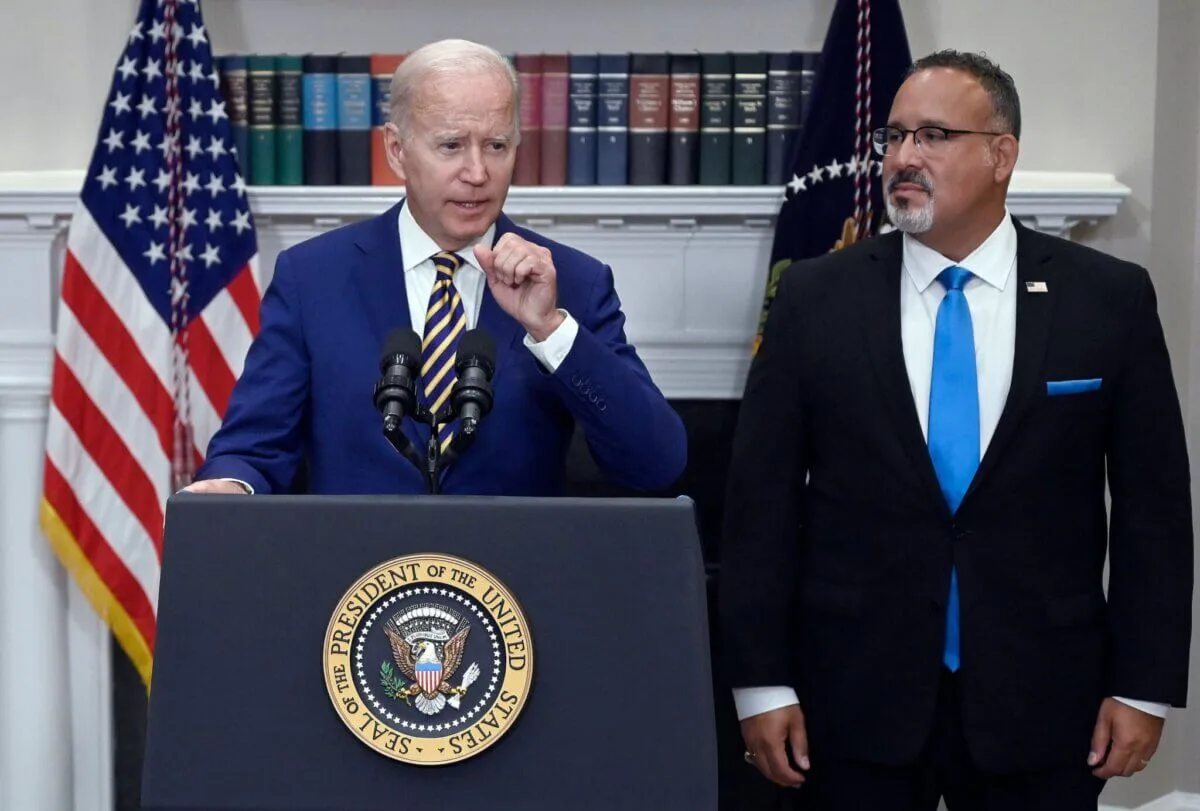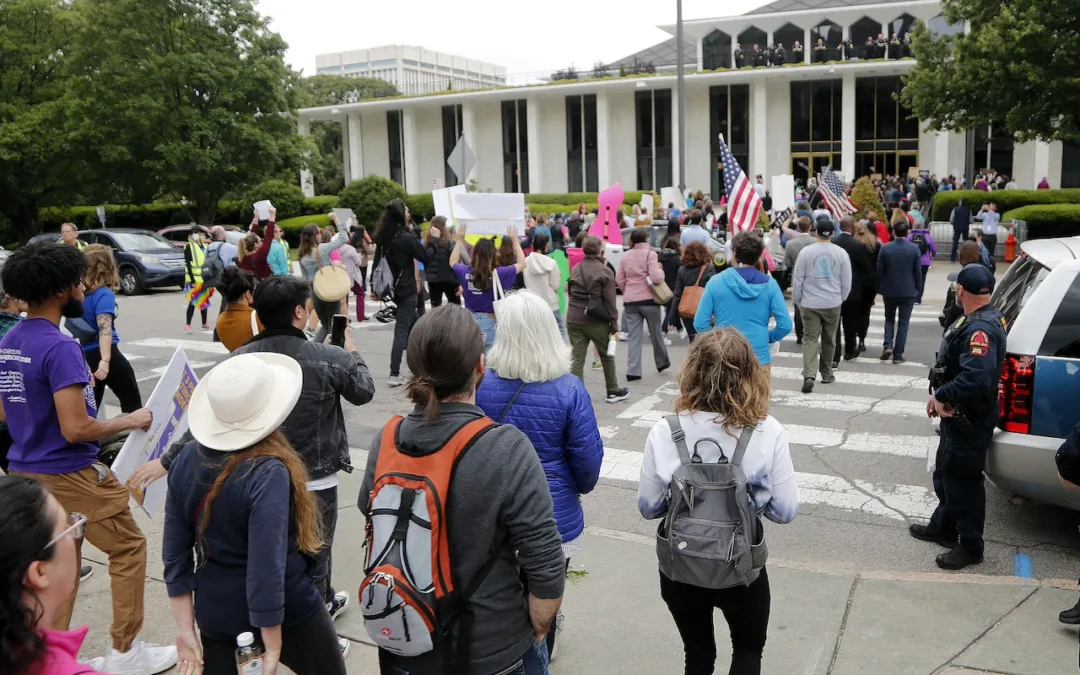
US President Joe Biden announces student loan relief with Education Secretary Miguel Cardona (R) on August 24, 2022 in the Roosevelt Room of the White House in Washington, DC. - Biden announced that most US university graduates still trying to pay off student loans will get $10,000 of relief to address a decades-old headache of massive educational debt across the country. (Photo by OLIVIER DOULIERY / AFP) (Photo by OLIVIER DOULIERY/AFP via Getty Images)
Under the new plan, borrowers who earn less than roughly $30,600 a year would owe $0 a month on their federal student loans, effectively pausing them. An estimated 8.5 million borrowers are enrolled in existing income-driven repayment plans and stand to benefit from the proposal. The plan would apply to future borrowers as well.
The Biden administration this month released the details of its updated student loan repayment plan which would help millions of borrowers cut their monthly payments by half, while completely pausing payments for others.
The changes, proposed earlier this month by the US Department of Education, would revise the agency’s existing income-driven repayment plan known as REPAYE and reduce payments on undergraduate loans to 5% of discretionary income (the amount left over after you cover necessities like food and rent), down from 10% in the existing REPAYE plan and 15% in other income-based repayment plans, which are being phased out as part of the new rule. Graduate borrowers would pay 10% of their discretionary income.
Under the new plan, borrowers who earn less than roughly $30,600 a year would owe $0 a month on their federal student loans, effectively pausing them. A borrower who’s in a family of four and makes less than roughly $62,400 would also see their payments paused.
The rule would also help borrowers’ avoid rising loan balances due to interest. As long as borrowers make their monthly payments, even if they’re $0, their balances will no longer grow or accumulate interest.
The new rules also adjust the payment formula so that more income is protected to help borrowers meet their basic needs.
An estimated 8.5 million borrowers are enrolled in existing income-driven repayment plans and stand to benefit from the proposal. The plan would apply to future borrowers as well.
The department estimates that future borrowers would see their total payments decrease by 40%. Families earning less than $29,000 a year on average would pay 83% less under the proposal, while those making above $90,000 would see only a 5% decrease in payments.
The plan would also help nearly nine in 10 community college borrowers become debt-free within a decade.
The proposal comes as the cost of higher education has spiraled out of control over the past few decades.
“We cannot return to the same broken system we had before the pandemic, when a million borrowers defaulted on their loans a year and snowballing interest left millions owing more than they initially borrowed,” Secretary of Education Miguel Cardona said in a statement.
The plan would also benefit borrowers who took out smaller loans. Individuals who took out loans with original balances of $12,000 or less total would only have to make payments for 10 years before the remaining amount is canceled, down from 20 years at present.
Notably, parents who borrowed money to pay for their kids’ higher education using Parent PLUS loans cannot enroll in the new plan.
In a statement, Persis Yu, deputy executive director of the Student Borrower Protection Center praised the proposal, calling it a “remarkable shift in the way the government supports struggling student loan borrowers.” But Yu also called on the Biden administration to allow ParentPLUS loan borrowers to benefit from it as well.
“Low-income families—especially low-income families of color—are more likely to rely on ParentPLUS loans or need to get a graduate degree to earn the same salary as their wealthier white peers. Equity demands that these borrowers have equal access to an affordable payment plan and the necessary supports to free themselves from the crushing weight of student debt,” Yu said. “The Secretary must include them in the final rule.”
The rule is currently going through a public comment period, and the department expects to finalize the rules and begin implementing the changes later this year.
The remainder of Biden’s student debt cancellation plan has been temporarily blocked by the Courts due to Republican-led lawsuits. The Supreme Court is expected to hear an appeal from the Biden administration in late February. If the Court allows Biden’s plan to proceed, it would cancel $20,000 in student debt for Pell Grant recipients and up to $10,000 for other individual borrowers earning under $125,000 per year.
Politics

New Biden rule protects privacy of women seeking abortions
Under the new rules, state officials and law enforcement cannot obtain medical records related to lawful reproductive health care with the goal of...

How North Carolina’s legislative session could affect you
After a six-month break, the General Assembly returns for a new session on Wednesday, April 24. Though this round is expected to be relatively...
Local News

The 5 most believable UFO sightings ever reported in North Carolina
Read about five alien encounters that may forever remain unexplained. When you think of the most common places where you might hear a UFO sighting...

Good News Friday: It’s a good day to be a fan of the NC State Wolfpack
The men's and women's teams will compete for a national championship in college basketball this weekend. Plus: How to watch the solar eclipse, and...




